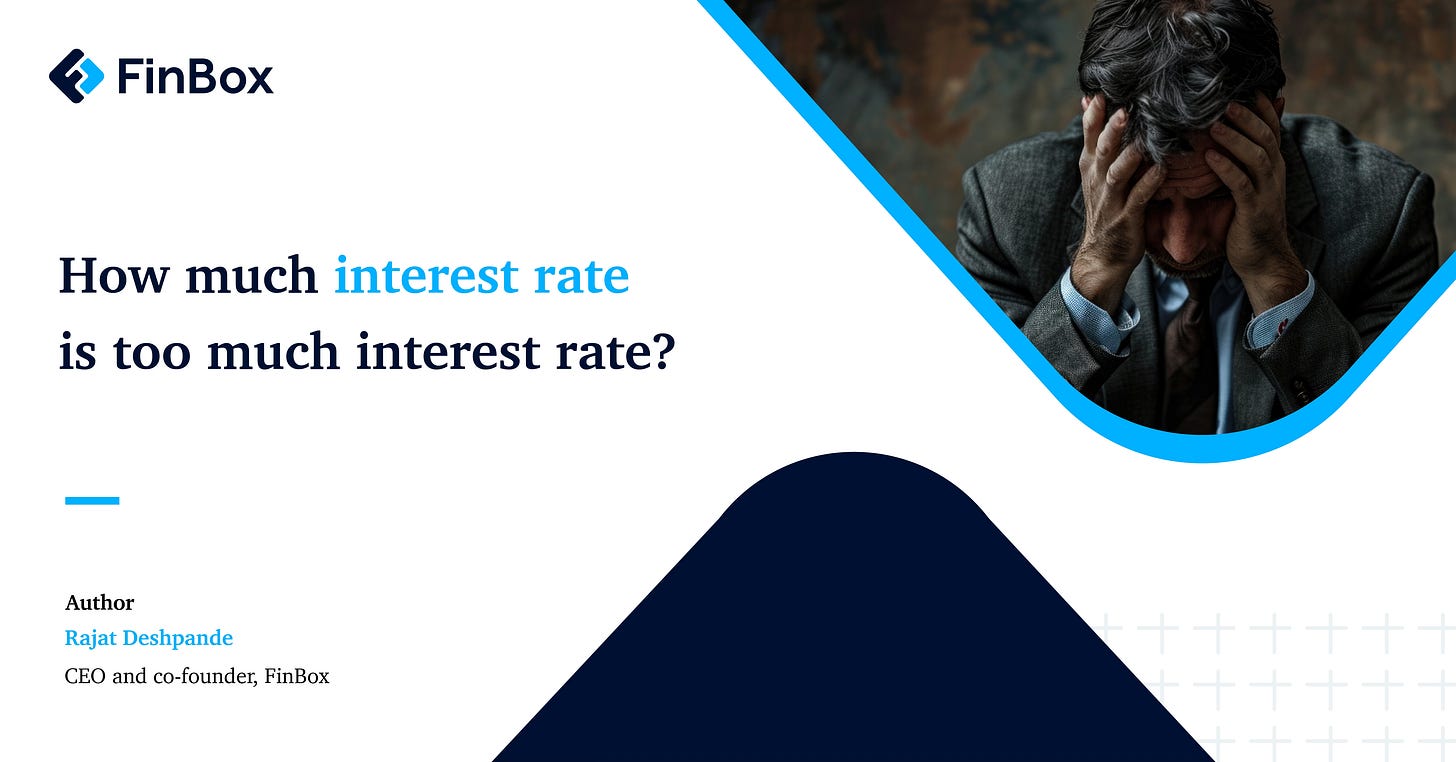How much interest rate is too much interest rate?
Are NBFCs becoming modern-day Shylocks?
Just a few days ago, the Reserve Bank of India (RBI) issued cease-and-desist orders to four NBFCs and lenders, freezing their loan sanctions and disbursals mainly due to one damning reason — excessive interest rates. In an age where risk-based pricing has become the norm, and high rates for riskier borrowers are justified by economic concepts such as adverse selection, it begs the question: How much is too much?
In this edition of The Big Picture, let’s take a closer look at a question that cuts to the heart of ethical lending: What truly constitutes a fair interest rate? When does justifiable pricing tip into exploitation? Let’s dive in to explore where fair risk-based pricing ends and predatory lending begins.
The anatomy of loan pricing
For the uninitiated, risk-based pricing is a lending practice where interest rates are tailored to each borrower's credit risk. Lenders evaluate the probability of a borrower defaulting and adjust interest rates accordingly — charging higher rates for riskier borrowers and lower rates for less- risky ones.
This system ensures that good borrowers are not penalised with higher interest rates simply because some borrowers present a greater risk, creating a fairer pricing structure overall. However, loan pricing is trickier than just considering individual default risk; there are several other factors that influence the final interest rate.
Cost of Funds
At the foundation of loan pricing lies the cost of funds, which is the rate at which lenders borrow money. This initial cost dictates the minimum interest rate a lender can offer. Banks, for example, typically access low-cost capital (from deposits and lower cost of borrowing from the RBI), enabling them to lend at competitive rates, sometimes even below 10%. However, as funds pass through the lending ecosystem, from banks to Non-Banking Financial Companies (NBFCs) to microfinance institutions (MFIs), the cost steadily rises, driving up the rates charged to end borrowers.
For example:
A bank borrows at 6.5% and lends to customers at 10%, earning a 3.5% spread.
An NBFC borrows from the bank at 10% and lends at 14%, earning a 4% spread.
An MFI borrows at 14% and lends at 18-20%, with a spread of 4-6%.
As you move down this chain, the interest rate rises from 6.5% to over 20% for the final borrower. This could get further pushed due to upward pressure on the interest rate spread from a range of other factors such as:
Operational cost
Cost of fraud
Cost of default
Cost of recovery
NBFCs typically face higher default rates than banks, largely because they cater to riskier customer segments, such as small businesses and non-salaried individuals. Additionally, a single operational mistake, like a faulty credit policy remaining in effect for just one day, could result in significant financial losses—potentially wiping out crores from their books. Considering these factors, NBFCs and NBFC-MFIs cannot afford to have their interest spread stretched too thin.
Onsite inspections revealed that many lenders were operating with a 12% spread, resulting in weighted average lending rates between 26-28%. Those that got barred by the RBI are said to have enjoyed a 14% spread, effectively about 30% or higher interest rate for the end borrower.
While a 12% spread seemed manageable to the regulator, the 14% spread prompted intervention, underscoring the perilous line between competitive pricing and predatory lending practices.
The 14% threshold: Unofficial cap or recipe for disaster?
As the cost of funds for NBFCs continues to rise and delinquencies in the micro-loan segment escalate, many in the industry feel they are being unfairly targeted. The pressing question is: why are NBFCs under scrutiny when credit card interest rates often soar much higher? If a 30% interest rate for the end borrower is considered excessive, shouldn't the RBI be taking action against the staggering 40% rates charged by credit card companies?
The answer lies in the stark differences between these segments. The customer bases for credit cards and micro-loans have vastly different thresholds for falling into debt traps.
The RBI's concerns go beyond mere interest rates; they highlight critical weaknesses in income assessment and past obligation evaluations as well. Therefore, comparing interest rates across these segments without considering these underlying factors is misleading and oversimplified.
The bottom line
As the lending landscape evolves, NBFCs and MFIs must balance their economic viability with consumer interests. Debt should serve as a catalyst for productive growth, not lead to entrapment.
Growing concerns about interest rates and lending practices highlight the need for a more nuanced approach—one that emphasises responsible financing while allowing institutions to operate sustainably. Notably, Self-Regulatory Organizations (SROs) have taken action in this regard. Sa-Dhan, the RBI-appointed SRO overseeing microfinance institutions, has reportedly urged its members to cap their return on assets (RoA) at 4%. All these point to a cultural shift in NBFC operations, encouraging a focus on long-term customer relationships rather than short-term profits. What’s your take on such caps and measures? I’d love to know!

